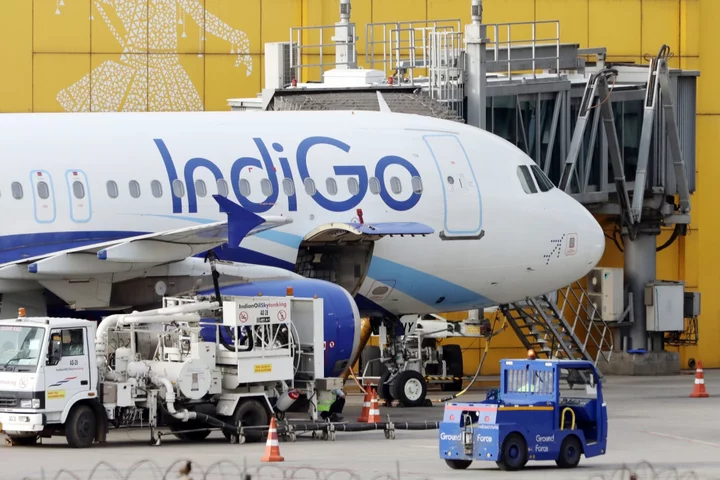With Japan’s chronic taxi driver shortage set to worsen as international tourists return, operators are turning to new university graduates to make up the numbers, forcing a shift in a profession long dominated by middle-aged men.
The shortage worsened after more than 10,000 drivers left the industry during the pandemic — reducing the number of drivers in Tokyo to around 54,000, according to the Hire-Taxi Association. The average age of a taxi driver in Tokyo is 58, according to industry body Tokyo Hire-Taxi Association. Many take up the profession in their 40s or 50s and work for around 10 years until retirement — a cycle that will keep the lack of drivers unresolved unless younger people can be attracted to make the industry a long-term career.
In a country where ride-sharing services such as Uber Technologies Inc. and China’s Didi Global Inc. have been banned to protect the taxi industry, the lack of drivers can make it difficult to get a cab during peak hours, while local media have reported on long lines at taxi ranks at airports and popular tourist destinations. The government this month announced plans to review working conditions in the taxi and bus industries and consider measures to help operators resolve the shortage of drivers.
The transport ministry is also reportedly considering adding taxi and bus drivers to its skilled-worker visa program to address the shortage, underscoring the severity of the problem given Japan’s long-standing reluctance to bring in migrant workers.
To attract younger drivers, taxi companies offer flexible hours and performance-based pay — a break from the rigid, seniority-based system that still dominates many Japanese companies. The hope is they will stick with the job for 20 to 30 years.
The push to hire younger drivers is starting to bear fruit.
Nihon Kotsu Co., Tokyo’s biggest taxi operator, began hiring new graduates in 2012. From an initial intake of just six people, it now has about 1,000 drivers — or 30% of its workforce — aged in their 20s. At its office in the capital’s Edogawa ward, the average driver age is 24.
“A shortage of drivers has always been an issue, but a vacuum was created after about 20% of drivers suddenly left their jobs during the pandemic,” said Takashi Nomura, a spokesperson at Nihon Kotsu.
Takeru Sanada, 23, who joined Nihon Kotsu in 2022 after graduating from university, said he enjoys the flexibility the job offers him, and the chance to meet tourists.
“I used to feel nervous not knowing the geography of Tokyo at the beginning, but I quite enjoy it now as I get to drive to new spots and speak to different customers,” he said, adding that being a self-professed night owl has helped. “I also get to take foreigners to the airport and drive them almost every day.”
A standard shift at Nihon Kotsu lasts around 18 1/2-hours, including a mandatory three-hour break. There’s also an optional 2 1/2-hours of overtime, but drivers get a full day off after each shift, giving them time to pursue their own interests. Nihon Kotsu has also been trialling a 5 to 6 hour shift since March. “We received an unexpectedly great response and many people in their 20s to 50s applied for this,” Nomura said.
“In this industry everyone gets to do similar job, it doesn’t matter how old you are,” Nomura said. “Some of those in their first year even make ¥500,000 to ¥600,000 per month,” or around $3,400 to $4,100. That compares to a regular starting salary of around ¥220,000 a month at a corporation.
Mana Kouda, a 23-year-old university graduate from Tokyo, said what appealed to her most was Nihon Kotsu’s additional services such as driving tourists around to Tokyo’s main attractions, and services with a social welfare touch like taking elderly passengers to the hospital.
“I felt there was stability as I would be able to do additional jobs other than just driving people everyday,” she said. “And I am learning English in my free time.”
Another Tokyo taxi firm, Kokusai Motorcars Co., has seen a sharp jump in graduates after it strengthened hiring efforts such as organizing recruiting events at universities and having students’ parents come to the company and know more about the career. It also introduced policies to tackle sexual harassment and aggressive customers, such as allowing drivers to kick unruly passengers out of their cabs, and reporting them to the police. Now, around 120 new graduates join each year.
“Nationwide, the shortage of taxi drivers due to the pandemic hasn’t been resolved. But it’s getting better in Tokyo,” an official at Kokusai Motorcars said.









